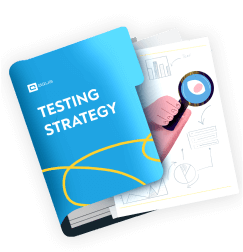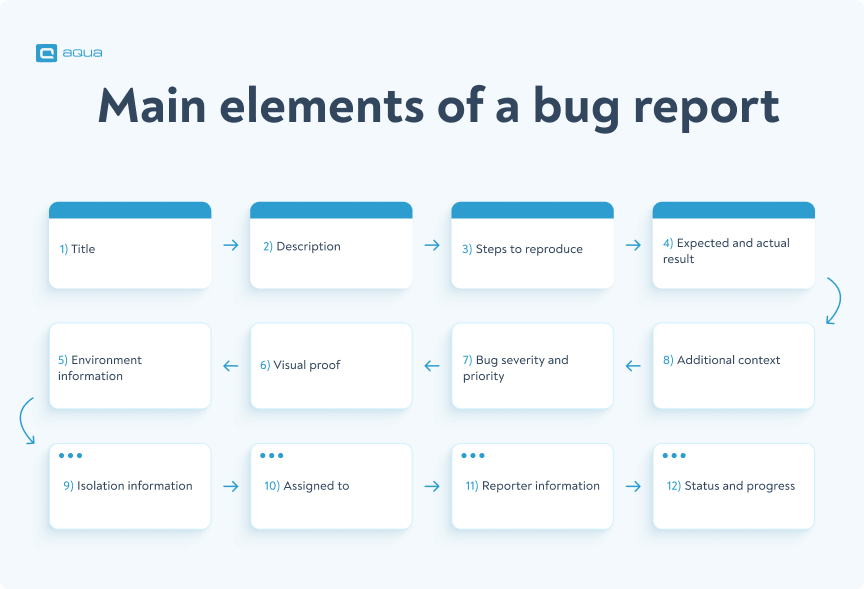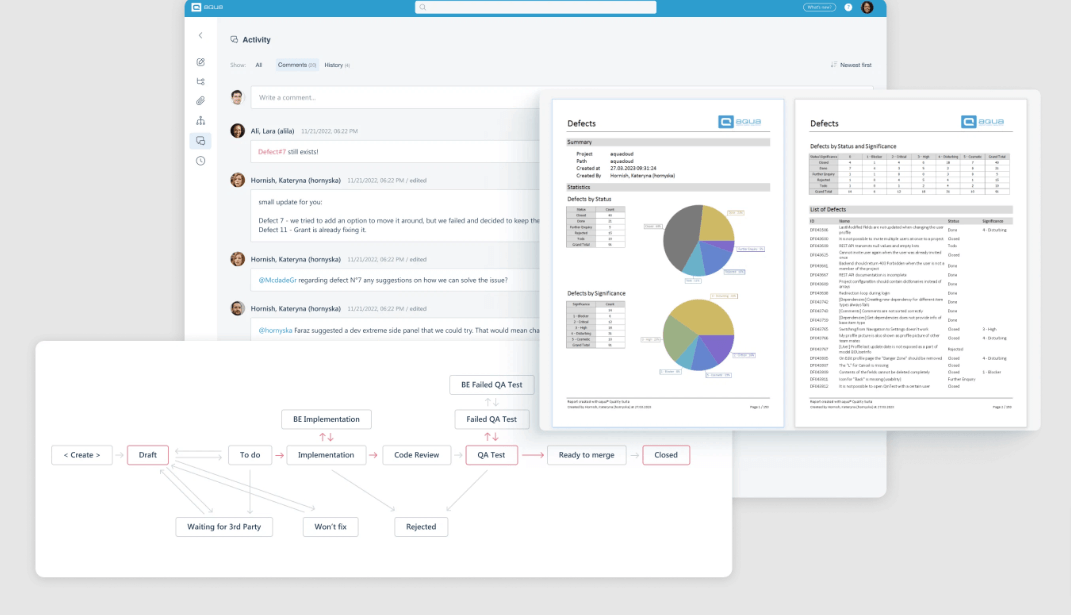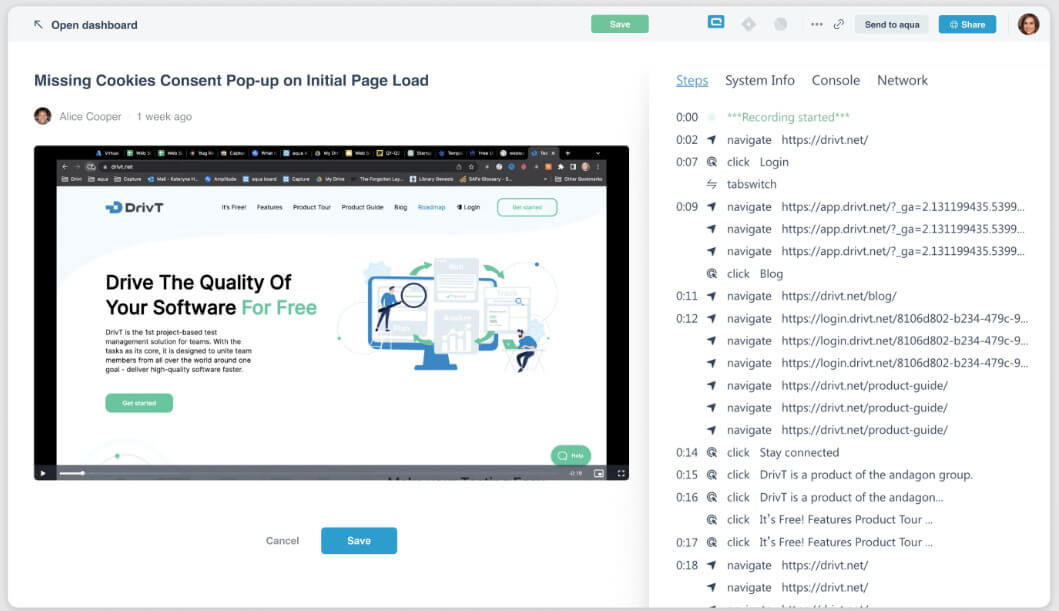Bug reporting is a skill that requires your full focus, precision, clarity, and a deep understanding of the development process. In this comprehensive guide, tailored for seasoned professionals like you, we address the significant points many encounter when documenting and communicating bugs. By this article’s end, we will equip you with vital knowledge and highly efficient strategies on how to write a bug report.
What is bug reporting?
Bug reporting in software testing is documenting and communicating defects found in software applications or systems. When testing the software from various aspects, you will encounter problems, glitches, or unexpected behaviour, which are all what users simply call bugs. They range from minor, surface-level defects to critical functionality issues that impact the user experience greatly.
When creating a bug report, you must provide a clear and detailed description, including steps to reproduce it, system information, and other relevant data. This report should be shared with developers and also accessible by project managers and other stakeholders involved in development.
Bug reports are a crucial bridge between testing and development teams, ensuring that the development team effectively understands and addresses identified issues. A well-written bug report helps developers understand the problem and provides essential context, making it easier to diagnose and fix the issue efficiently, as often reflected in bug tracking software. Effective bug reporting is vital in maintaining software quality, meeting project deadlines, and fostering collaboration between testing and development teams.
Qualities of an effective bug report
The question “What is a good bug report?” also can be rephrased as “What qualities should a well-crafted bug report include?”. So here are the criteria you should apply when creating and assessing bug reports:
- Conciseness: An effective bug report is succinct and to the point, avoiding unnecessary fluff and focusing on providing essential information to understand the issue quickly.
- Clarity: A bug report should use clear and straightforward language to convey the problem, leaving no room for ambiguity or misinterpretation.
- Relevance: A quality bug report includes only the information related to the bug. Unrelated details can distract developers from identifying the core issue.
- Objectivity: Bug reports should avoid personal opinions or assumptions and only include factual information.
- User-centric perspective: A good bug report highlights how the bug affects the user experience and the importance of resolving the issue.
- Effective structure: The bug report should include a summary, description, reproduction steps, expected and actual results, environment, etc.
- Evidence-based: Whenever possible, include evidence to support the bug report, such as screenshots, videos, logs, or error messages. This strengthens the report’s credibility and helps replicate the bug.
- Context awareness: An effective bug report demonstrates an understanding of the application’s context, including its functionalities, use cases, and system architecture.
- Timeliness: A quality bug report is submitted promptly after discovering the bug, increasing the chances of the issue being addressed sooner.
- Collaborative spirit: Approach bug reporting as a collective effort to improve software quality rather than a blame game. Use the right language to foster a positive working relationship between testers and developers.
- Attention to detail: Some minor details may seem insignificant or slightly too long to write but could be crucial in identifying (and not misidentifying) the root cause of the bug.
- Error classification: Categorise the bug based on its nature, such as functional, performance, or usability issues. This aids developers in prioritising and tackling different types of bugs efficiently.
- Follow-up and communication: Follow up with developers to provide additional information or clarify any points in the bug report. Be open to discussions and work together towards a resolution.
- Knowledge sharing: Use bug reports to share knowledge among team members, enhancing the collective understanding of the application and potential issues.
- Empathy: Recognise that developers are also striving for excellence, and approaching bug reporting with empathy can lead to a more constructive and positive development process.
Most important features of a bug report
The most important features of a bug report provide essential elements to help your team understand, reproduce, and address the reported issue effectively. Here are the key features every bug report should include:
- Title: Summarise the issue with a clear and concise yet descriptive title.
- Description: Include a brief description of the bug to tell what goes wrong and how widespread and/or impactful the issue is.
- Steps to reproduce: Add step-by-step instructions on reproducing the bug and help developers recreate the issue.
- Expected results: Clearly state what the expected behaviour should be when the bug is not present.
- Actual results: Describe what happens in the application when the bug occurs.
- Environment information: Include relevant information about the environment, like the OS, browser version, and device type.
- Attachments: Add screenshots, videos, or other media visually demonstrating the bug.
- Reproducibility rate: Specify the reproducibility rate to show developers how frequently the bug occurs.
- Severity and priority: Indicate the severity level of the bug (e.g., critical, major, minor) and its priority (e.g., high, medium, low) based on perceived business impact and urgency.
- Isolation information: Help to narrow down the root cause by specifying whether the bug is reproducible only in specific scenarios or environments.
- Additional context: Provide any other relevant context, such as the steps leading up to the bug, related bugs, or recent changes in the codebase that you think may have caused the issue.
- Logs and error messages: If applicable, include relevant logs or error messages that may assist developers in diagnosing the problem.
- Assigned to: Indicate the person or team responsible for addressing the bug.
- Reporter information: Identify the person who reported the bug, allowing for follow-up questions or clarification if needed.
- Status and progress: Keep the bug report updated with the current status of the bug and the progress made.
By the way, if you want to elevate your testing game, we introduce our comprehensive testing strategy template. This roadmap is a tailored version of a real-life strategy to equip QA professionals and their colleagues with the test scope, testing levels, and tools insights to conquer any testing challenge that comes your way. Using this template will streamline your testing process, saving a lot of time and resources along the way.

Achieve testing excellence with our testing strategy template
How to write bug reports step-by-step
Here are the step-by-step instructions for writing a bug report:
Step 1: Observe the bug
Thoroughly test the application and identify any unexpected behaviour, errors, or issues.
Step 2: Reproduce the bug
Attempt to reproduce the bug in a controlled environment. Note down the exact steps to recreate the issue.
Step 3: Gather information
Collect relevant details about the bug, including the operating system, browser, device, application version, and other relevant environment information.
Step 4: Define the bug
Write a clear and descriptive title summarising the bug concisely.
Step 5: Describe the bug
Provide a detailed description of the bug, explaining what happened, where it occurred, and its impact on the application.
Step 6: Include the expected results
Clearly state what the expected behaviour should be when the bug is not present.
Step 7: Include the actual results
Describe the actual behaviour observed when the bug occurred and how it differed from the expected results.
Step 8: Attach visual evidence
Capture screenshots, videos, or other visual evidence demonstrating the bug.
Step 9: State bug severity and priority
Evaluate the bug’s severity (e.g., critical, major, minor) based on its impact on the application and prioritise it for fixing (e.g., high, medium, low).
Step 10: Include additional context
Include any other relevant information that may help developers understand the bug better, such as related workflows or recent changes in the codebase.
Step 11: Isolate the bug
Identify whether the bug is specific to certain modules or conditions.
Step 12: Assign the bug
Indicate the person or team responsible for addressing the bug.
Step 13: Submit the bug report
Submit the bug report to the appropriate bug-tracking system or development team.
Step 14: Follow up and collaborate
Engage in follow-up discussions with developers, provide additional information if needed, and collaborate on resolving the bug.
Step 15: Verify the fix
Once the bug is fixed, verify the resolution and provide feedback in the bug report.
Example of the bug report
Below is a bug report example that shows everything you should include in your report. Although it is a basic sample, you can also use this as a bug report template:
Title: Search Functionality Not Returning Results
Description: When using the search functionality on the website, no search results are displayed, even for valid and commonly used keywords.
Steps to Reproduce:
- Go to the homepage (https://www.ourwebsite.com).
- Locate the search bar at the top right corner of the page.
- Enter the keyword “product” into the search bar.
- Click the “Search” button or press the “Enter” key.
Expected Results:
The search results page should display a list of products related to the keyword “product.”
Actual Results:
After the search, the search results page remains empty, and no products are displayed.
Environment Information:
- Operating System: Windows 10
- Browser: Google Chrome Version 94.0.4606.81 (Official Build) (64-bit)
Screenshots: (Attach relevant screenshots showing the empty search results page)
Bug Severity and Priority:
Severity: Major
Priority: High
Additional Context:
- This issue occurs consistently on all pages of the website.
- The search functionality worked correctly until a website update two days ago.
- No error messages are displayed; the search page simply appears blank.
Isolation Information:
The issue seems unrelated to specific user accounts or login status, as it occurs for both logged-in and guest users.
Assigned To:
Development Team 
Reporter Information:
QA Tester, John Doe (john.doe@example.com)
Status and Progress:
- Reported on: DD/MM/YYYY
- The development team is investigating the issue.
“Every time you report a bug, you should explain how exactly the product is broken”
List of the best bug reporting tools
Here is a list of some famous and highly regarded bug-reporting tools used by devs and testers:
- Jira is a widely used bug tool developed by Atlassian. It offers extensive customisation options and integrates well with other development tools but can’t handle the actual QA lifecycle and can be challenging for non-tech users with its extensive features and configurations.
- Bugzilla is an open-source bug-tracking system that provides a simple interface for reporting and managing bugs. While it can effectively handle bug tracking for smaller teams, Bugzilla will encounter performance issues or complexity challenges when used for extensive, enterprise-level projects with high volumes of bugs and users.
- Mantis Bug Tracker is another open-source bug-tracking tool with a user-friendly interface and a range of features for bug management, but it has a limited number of integrations with other development and project management tools.
- YouTrack was developed by JetBrains, known for its powerful search and filtering capabilities, however, configuring workflows and settings to align with specific team processes might require a steeper learning curve and more time investment than simpler bug-tracking tools.
aqua cloud - the ultimate, modern bug-tracking tool
But if you are looking for all-in-one bug-tracking software that meets Enterprise demands and regulatory requirements, aqua cloud is the solution you are looking for. Using aqua for your issue-tracking efforts, you can:
- Build a troubleshooting pipeline with defined workflows to effectively manage the defects’ lifecycle.

- Use aqua’s native integration with Capture for simple bug reporting and test recording with just one click. Capture includes a video recording, timestamped actions log, DevTools data, and hardware/OS information for comprehensive bug reports.

- Save time on fix validation by quickly seeing bugs marked as fixed since the last execution of the test case.
- Leverage aqua’s AI to automatically detect and eliminate duplicate defects, reducing the number of reported bugs by up to 20%.
- Create test cases with aqua copilot: aqua Copilot offers a streamlined approach to creating test cases, especially for edge cases, automatically generating test scenarios, including edge cases, saving time and ensuring thorough test coverage.
- Involve non-tech individuals in bug reporting by setting up intuitive defect templates for easy issue sharing.

- Save time on regular testing by executing aqua test cases with Capture, allowing seamless defect ticket creation without interrupting the testing process.
As the ultimate QA testing tool, aqua also offers comprehensive analytics, helping you identify issues requiring immediate attention. From efficient fix validation to smooth collaboration between teams, aqua optimises your testing efforts, enabling you to streamline your testing efforts by eliminating redundant tasks.
Transform your testing journey with a click
Conclusion
Effective bug reporting is a vital skill for senior testers and QA engineers to ensure high-quality software delivery. This comprehensive guide has explored core principles and best practices to craft impactful bug reports. You can streamline workflows and enhance bug resolution efficiency by prioritising clarity, collaboration, and leveraging tools like aqua cloud. Engaging in continuous learning and fostering a culture of open communication will drive software excellence, leading to a future where every reported bug is an opportunity for progress. Happy bug reporting!







